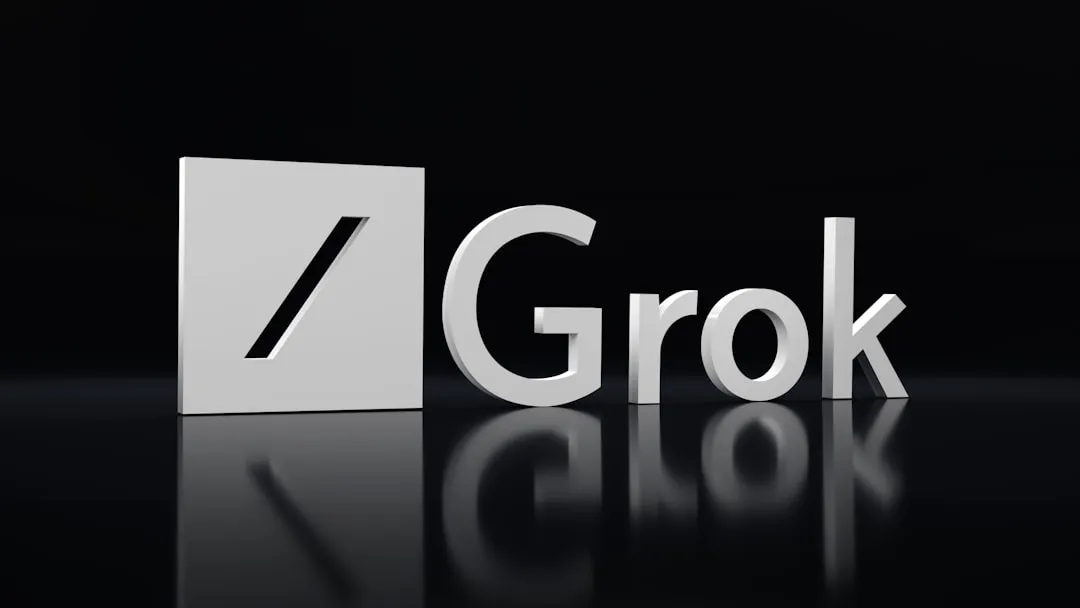Reviewed by Julianne Ngirngir
The tech industry has been buzzing about generative AI for the past few years, with companies scrambling to claim their piece of the AI revolution. But here's the thing—while everyone was chasing ChatGPT's success, something far more strategic has been unfolding behind the scenes. IBM and AMD announced a collaboration to deploy AMD Instinct MI300X accelerators as a service on IBM Cloud, expected to be available in the first half of 2025. Meanwhile, IBM is positioning itself as an "AI First" company, where AI is not just an enhancement but a central pillar of every business function.
The twist? Both companies are betting big on quantum computing as their secret weapon for the future—and this collaboration creates the bridge between today's AI acceleration and tomorrow's quantum-enhanced systems.
Why the generative AI race left some players behind
Let's break down what happened in the generative AI space. While companies like OpenAI and Google dominated headlines with consumer-facing chatbots, IBM took a fundamentally different approach. The company focused on enterprise solutions rather than the flashy consumer applications that captured public attention—a strategy that now positions them perfectly for the quantum-AI convergence.
IBM cited McKinsey stats projecting trillions in economic impact from AI within the next decade, but they weren't chasing viral moments. Instead, IBM's Granite and Instruct Lab models are targeted solutions that cater to specific business needs and are released as open-source under Apache 2. This enterprise-first approach builds exactly the kind of governance frameworks and measured implementation strategies that quantum-AI systems will require.
The reality check comes from the market itself: only 25 percent of CEOs are seeing the return on artificial intelligence they expected, yet they're still investing more in AI. This gap between expectation and reality created an opening for companies like IBM that focused on practical implementation rather than revolutionary promises—exactly the mindset needed for quantum computing's complex requirements.
AMD faced its own challenges in the generative AI space, competing against NVIDIA's overwhelming dominance in AI accelerators. However, AMD Instinct MI300X accelerators offer support for the largest model inferencing and fine tuning with 192GB of high-bandwidth memory (HBM3). The collaboration with IBM represents AMD's strategic pivot—gaining enterprise market share through cloud services while building the classical computing foundation that quantum systems will need for hybrid operations.
What's particularly clever about this partnership is how it positions both companies for the next wave of computing. This collaboration will also enable support for AMD Instinct MI300X accelerators within IBM's watsonx AI and data platform, as well as Red Hat Enterprise Linux AI inferencing support. It's creating a unified infrastructure where classical AI acceleration can seamlessly integrate with quantum processing units as they mature.
What makes quantum computing their ace in the hole?
Here's where things get really interesting. While others focus purely on scaling existing AI architectures, IBM has been building something fundamentally different—and they've been at it for decades. IBM has built 75 actual quantum computers, not simulators, not just software—you can access 13 of them today on the cloud from IBM.
This isn't some distant research project. IBM's quantum roadmap outlines the company's comprehensive strategy aimed at scaling quantum computing and expanding how they can be used for commercial and scientific application. The roadmap extends beyond 2033 and breaks down into two main sections: the development and innovation roadmaps. This systematic approach mirrors their enterprise AI strategy—practical, measured, and focused on real business outcomes.
The performance improvements are nothing short of remarkable. IBM Quantum Heron, the company's most performant quantum processor to-date, can now leverage Qiskit to accurately run certain classes of quantum circuits with up to 5,000 two-qubit gate operations. But here's the kicker—the same experiment that took 112 hours in 2023 using the previous generation can be completed in 2.2 hours on the latest IBM Heron processor—that's 50 times faster. These aren't incremental improvements; they're exponential leaps that demonstrate quantum's potential to revolutionize computational timescales.
The scaling ambitions are equally impressive. IBM aims to demonstrate a 1,000+ qubit system called "Flamingo" by 2025. Beyond that, they're planning systems with hundreds of thousands of qubits. This roadmap directly addresses the energy efficiency crisis facing AI—where current training costs are skyrocketing exponentially, quantum systems offer the potential for dramatically more efficient computation.
The convergence that could change everything
What's really fascinating is how quantum computing and AI are starting to merge in ways that could solve the fundamental scalability problems plaguing today's AI systems. Quantum artificial intelligence is an emerging field that combines the power of quantum computing with artificial intelligence to push the boundaries of what's possible.
The speed advantages are game-changing. Quantum computing accelerates machine learning through its ability to process vast datasets at unprecedented speeds, reducing the time it takes to train models from days or weeks to hours or minutes. But more importantly, quantum systems can explore solution spaces that are computationally impossible for classical systems—potentially solving optimization problems that currently consume enormous amounts of energy.
The practical applications are already emerging in ways that demonstrate quantum's unique advantages. IBM and Cleveland Clinic are exploring algorithms for electronic structure problems fundamental to chemistry using quantum and classical resources with Qiskit. These aren't problems that classical computers can solve faster with more processors—they're fundamentally quantum mechanical problems that require quantum approaches.
The integration is happening at the software level too, making quantum development accessible to AI practitioners. IBM has integrated the Qiskit platform with Generative AI tools and AI-powered tools like Code Assistant to streamline quantum programming. This democratizes quantum development, making it accessible to developers who don't have PhDs in quantum physics—exactly what's needed for widespread adoption.
The convergence creates new computational paradigms that neither classical AI nor quantum computing could achieve alone. Quantum systems excel at exploring vast probability spaces and finding optimal solutions in complex, multidimensional problems—precisely the challenges that make AI training so computationally expensive today.
Getting started: implementation that actually works
The quantum-AI convergence might seem like science fiction, but the infrastructure is being built today with clear business applications on the horizon. IBM's development roadmap highlights that by 2025, the company plans to integrate error mitigation techniques within Qiskit Primitives, forming a robust foundation for developers to build quantum workflows.
Here's what makes this approach particularly strategic: In 2025, IBM plans to introduce serverless tools, allowing users to focus on developing algorithms without managing the underlying infrastructure. This serverless approach eliminates the complexity barrier that has kept quantum computing in research labs, enabling businesses to experiment with quantum-enhanced AI workloads through familiar cloud interfaces.
The collaboration between IBM and AMD creates exactly this kind of hybrid ecosystem. Organizations can run classical AI acceleration on AMD's Instinct MI300X processors while seamlessly integrating quantum algorithms for specific optimization problems. This collaboration enables support for AMD Instinct MI300X accelerators within IBM's watsonx AI and data platform, as well as Red Hat Enterprise Linux AI inferencing support, creating a unified platform where the best of both computational worlds can work together.
The practical implications are already emerging across industries. Organizations can start experimenting with quantum-enhanced optimization problems—supply chain logistics, financial portfolio optimization, drug discovery—while maintaining their existing AI infrastructure. This hybrid approach reduces risk while positioning companies for the quantum advantages that are coming faster than most realize.
Where do we go from here?
The timing couldn't be more critical, and the competitive advantages are becoming clear. CEO Krishna believes that in the four-, maybe five-year time frame, you will begin to see incredible advantages from quantum computers. This isn't some distant future prediction—it's a roadmap for the next business cycle, backed by 75 operational quantum systems.
The industry momentum is building rapidly with concrete milestones ahead. IBM and its partners are progressing towards quantum advantage and IBM's advanced, error-corrected system planned for 2029. Meanwhile, quantum computing leaders IBM, IonQ, and Alphabet are poised for major growth in 2025 as the race to commercialize quantum tech accelerates.
What makes this particularly compelling is how multiple economic pressures are converging. Energy costs for AI training are skyrocketing—some estimates suggest AI could consume as much energy as entire nations by 2026. Quantum computing offers a potential solution that could reduce energy consumption while dramatically improving performance. The environmental and economic incentives are aligning perfectly with technological capability.
The competitive landscape reveals why IBM and AMD's partnership is so strategic. While companies focused on the generative AI gold rush, they've been building the infrastructure for the next computational paradigm. Their collaboration represents a bet that the future belongs to organizations that can seamlessly blend classical AI acceleration with quantum advantage, rather than betting everything on scaling current approaches.
The bottom line: while the generative AI hype cycle continues, IBM and AMD are quietly building the infrastructure for the next computational revolution. Their bet on quantum computing isn't just about catching up in today's AI race—it's about leapfrogging entirely into a new paradigm where quantum-enhanced systems solve problems that classical computers simply cannot address efficiently. The question isn't whether quantum-AI systems will transform industries, but whether your organization will be ready when they do.
The companies that succeed in the next decade won't be those that rode the current AI wave, but those that positioned themselves for the quantum-AI convergence that's arriving faster than most people realize.










Comments
Be the first, drop a comment!